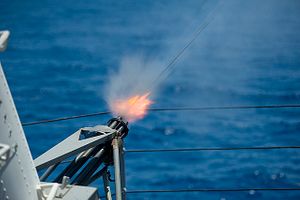For many years, the international community has been less than fair in its treatment of Taiwan. Nevertheless, the government and people of the Republic of China (ROC) on Taiwan are committed to having their nation be a capable, responsible stakeholder as well as a facilitator and protector of peace in the region and across the Taiwan Strait. On May 26, ROC President Ma Ying-jeou put forth the South China Sea Peace Initiative. This important policy follows up on his 2012 proposal of a similar peace plan for the East China Sea and reflects a longstanding ROC philosophy and approach; as such , it merits global attention.
Under the premise that ROC territory and sovereignty are safeguarded, the South China Sea Peace Initiative – which mirrors the East China Sea plan – calls on all parties concerned to shelve sovereignty disputes, exercise restraint, and agree to resolve disputes peacefully, establish a code of conduct, respect the UN Charter and Convention on the Law of the Sea, and jointly develop resources. It also urges the parties to work together on such nontraditional security issues as recue at sea, combating piracy, and humanitarian assistance. Taiwan firmly adheres to this position and offers a viable path that deserves affirmation.
President Ma mindfully chose this moment to introduce the South China Sea Peace Initiative. The world is now waiting to see whether further action will be taken, and how the parties concerned react to the proposal.
First of all are questions of stance and attitude. In considering sovereignty over the South China Sea, during 1946-1947, the ROC government in Nanjing dispatched a naval fleet to these waters to erect a marker, claiming sovereignty over territory in the region and making this claim known to the rest of the world. It then issued maps showing these claims and introducing the 11-dash or so-called U-shaped line. No protests to these claims were voiced at this time. Today, related countries have taken up different positions, but the Republic of China has indicated that – with recognition of its sovereignty over these areas being a precondition – it is willing to put aside the sovereignty dispute and engage other parties in dialogue designed to resolve the dispute and jointly develop resources in the area. This shows that Taiwan is prepared to act in a reasonable, self-restrained, and open-minded fashion.
Second, tension has escalated in the South China Sea, where countries concerned have been trying to outdo each other expanding their facilities. Discord between mainland China and the United States has shifted from diplomatic rhetoric to actual friction. The U.S. has sent military aircraft and ships through the region to reassert its position on freedom of navigation. The defense chiefs of the two countries engaged in a heated debate on the South China Sea issue at the recent Shangri-la Dialogue in Singapore. Although conflict is not expected in the near future, tension in the region – before it is alleviated – could spiral upward through controlled escalation. This situation must be carefully addressed and quickly defused. The South China Sea Peace Initiative is therefore a timely proposal by President Ma.
After its announcement, the East China Sea Peace Initiative was affirmed directly or indirectly by the U.S. and Japan and, in its wake, Taiwan and Japan signed a much-needed fisheries agreement. The U.S. has responded promptly to the South China Sea Peace Initiative, expressing appreciation through its State Department. This at least reflects the fact that as long as Taiwan takes the middle road, acts rationally and pragmatically, and is willing to communicate through dialogue and peacefully resolve disputes, its efforts will be recognized. Air transit over the South China Sea ought not be interfered with, and all parties ought to exercise self-restraint, respect peace, and engage in dialogue. According to Confucius, virtue does not dwell alone; he who practices it will always have friends. We can foresee that Taiwan’s rational policy and actions will receive the support and commendation of more countries.
Looking to the future, although there is a realistic side to international politics and the Republic of China is in an unfavorable situation, we nonetheless hope that the South China Sea Peace Initiative proposed by President Ma would be accepted and acted upon by all parties. Taiwan seeks to participate in a dialogue for peace in the South China Sea in a reasonable way that affords it dignity. Taiwan could help establish a code of conduct acceptable to all parties, put an end to the vicious cycle of impasses, and contribute to peace in the Asia-Pacific region. Only this creates a scenario that benefits all parties, which is something they should aim to realize soon.
Dr. George W. Tsai, is a Professor at Chinese Culture University.

































